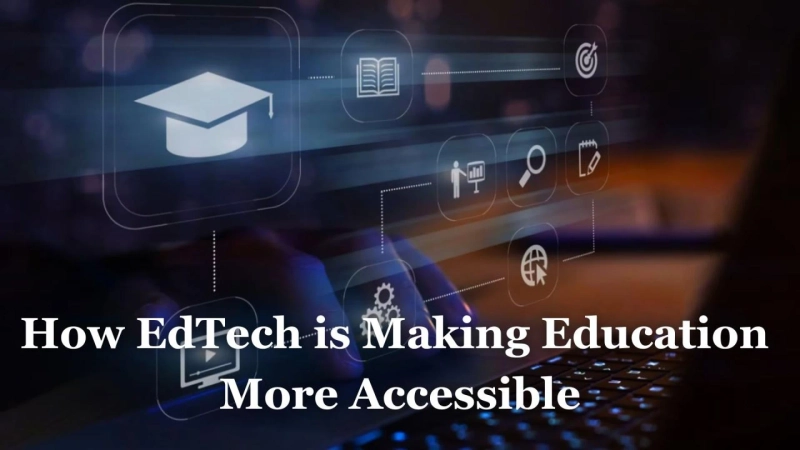Introduction
Education Technology, or EdTech, is revolutionizing the educational landscape by making learning more accessible to students around the world. With advancements in technology, barriers such as geographic location, physical disabilities, and financial constraints are being dismantled, offering a more inclusive and equitable education system.
Breaking Geographic Barriers
One of the most significant ways EdTech is making education more accessible is by overcoming geographic barriers. Online courses, virtual classrooms, and digital resources allow students from remote or underserved areas to access quality education that was previously unavailable to them.
Online Learning Platforms: Platforms like Coursera, edX, and Khan Academy provide a plethora of courses from top universities and educators worldwide. These platforms enable students to learn at their own pace, regardless of their location.Virtual Classrooms: Tools like Zoom, Microsoft Teams, and Google Classroom facilitate real-time interaction between students and teachers, replicating the traditional classroom experience in a digital environment.Supporting Students with Disabilities
EdTech is also playing a crucial role in supporting students with disabilities, ensuring they receive a quality education tailored to their needs.
Assistive Technologies: Tools such as screen readers, voice recognition software, and adaptive keyboards help students with visual, auditory, and motor impairments to participate in the learning process effectively.Customized Learning Materials: EdTech allows for the creation of personalized learning materials that cater to individual needs, such as audiobooks for visually impaired students or interactive simulations for those with learning disabilities.Addressing Financial Constraints
Financial barriers often prevent students from accessing quality education. EdTech is helping to alleviate these constraints by offering affordable and sometimes free learning resources.
Open Educational Resources (OER): OER are freely accessible, openly licensed text, media, and other digital assets useful for teaching, learning, and research. These resources reduce the cost of educational materials for students.Scholarships and Grants: Many online learning platforms offer scholarships and financial aid to students who cannot afford the fees, making higher education more accessible to a broader audience.Enhancing Flexibility and Convenience
EdTech provides flexibility that traditional education systems often lack. This flexibility is particularly beneficial for non-traditional students, such as working professionals and parents.
Self-Paced Learning: Online courses often allow students to learn at their own pace, accommodating their schedules and learning speeds. This flexibility is crucial for those balancing education with work or family responsibilities.Microlearning: EdTech supports microlearning, where content is delivered in small, manageable segments. This approach helps students absorb information more effectively and fits learning into their busy lives.Promoting Lifelong Learning
EdTech is fostering a culture of lifelong learning, encouraging individuals to continuously acquire new skills and knowledge throughout their lives.
Continuous Professional Development: Online courses and certifications help professionals stay updated with industry trends and advance their careers.Learning Communities: Digital platforms facilitate the formation of learning communities where individuals can share knowledge, resources, and support, enhancing the learning experience.Increasing Engagement and Motivation
Interactive and engaging learning experiences are crucial for maintaining student interest and motivation. EdTech tools are designed to make learning more engaging.
Gamification: Incorporating game elements into learning, such as leaderboards, badges, and rewards, makes the educational process more enjoyable and motivating.Interactive Content: EdTech platforms offer interactive content such as quizzes, simulations, and virtual labs, which enhance understanding and retention of information.Expanding Teacher Capabilities
EdTech is not only beneficial for students but also empowers teachers by providing them with tools to enhance their teaching methods and reach more students.
Professional Development: Online training programs and workshops help teachers stay updated with the latest educational trends and technologies.Data Analytics: EdTech tools provide teachers with insights into student performance and progress, allowing for more personalized and effective teaching strategies.
Also Read- Tech Trends 101: A Beginner’s Guide to Understanding Technology Trends
Conclusion
EdTech is a powerful force in making education more accessible and inclusive. By breaking down geographic barriers, supporting students with disabilities, addressing financial constraints, and promoting lifelong learning, EdTech is transforming the educational landscape. As technology continues to evolve, it will undoubtedly play an even more significant role in ensuring that quality education is available to everyone, regardless of their circumstances.


